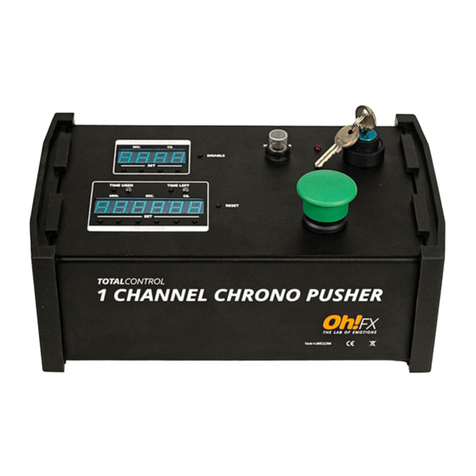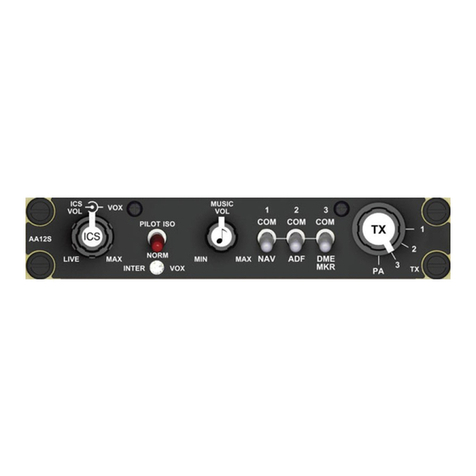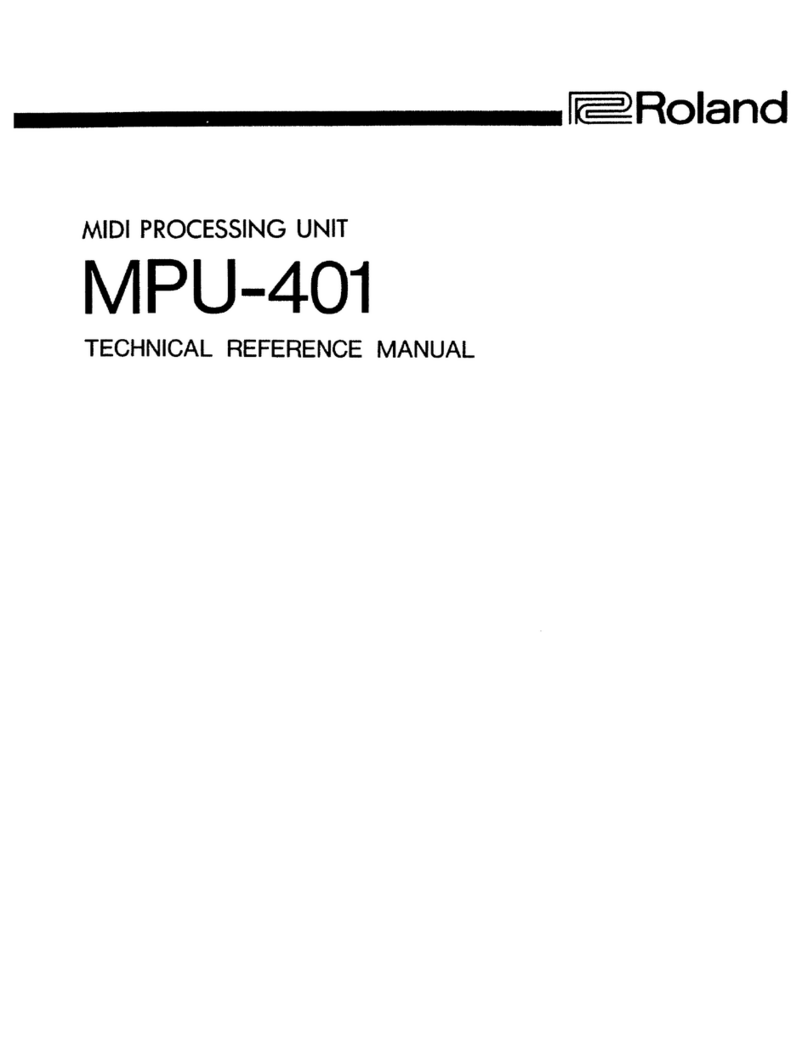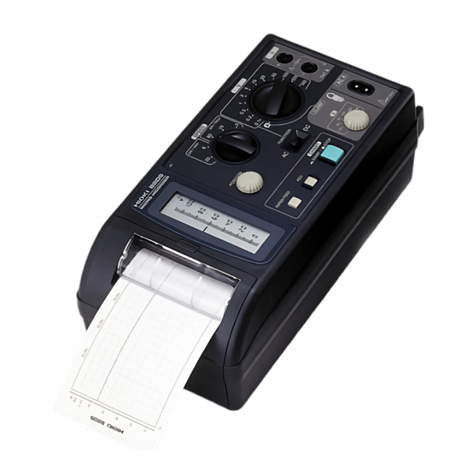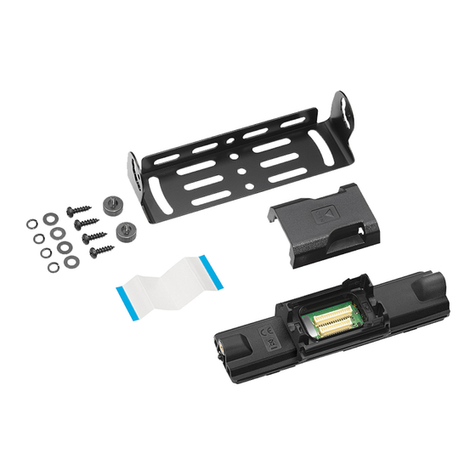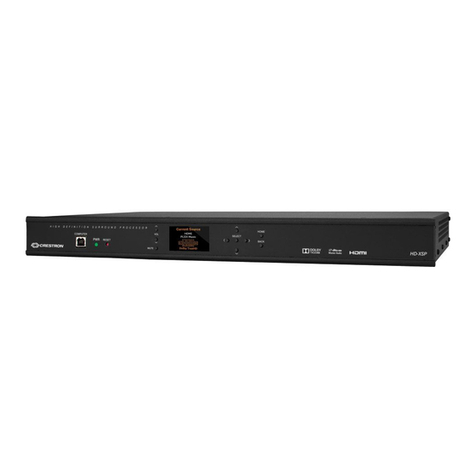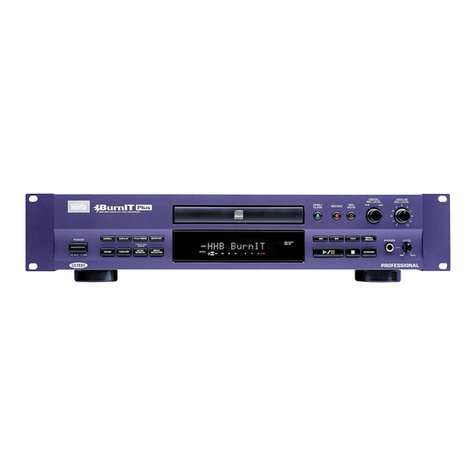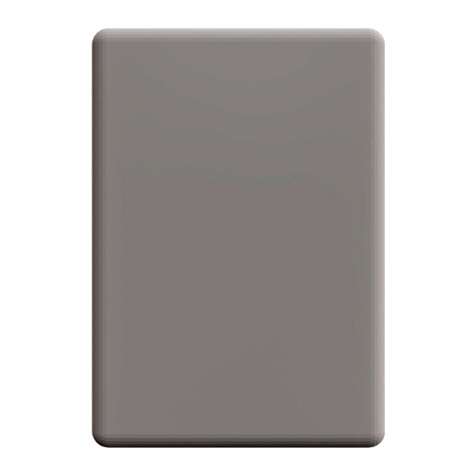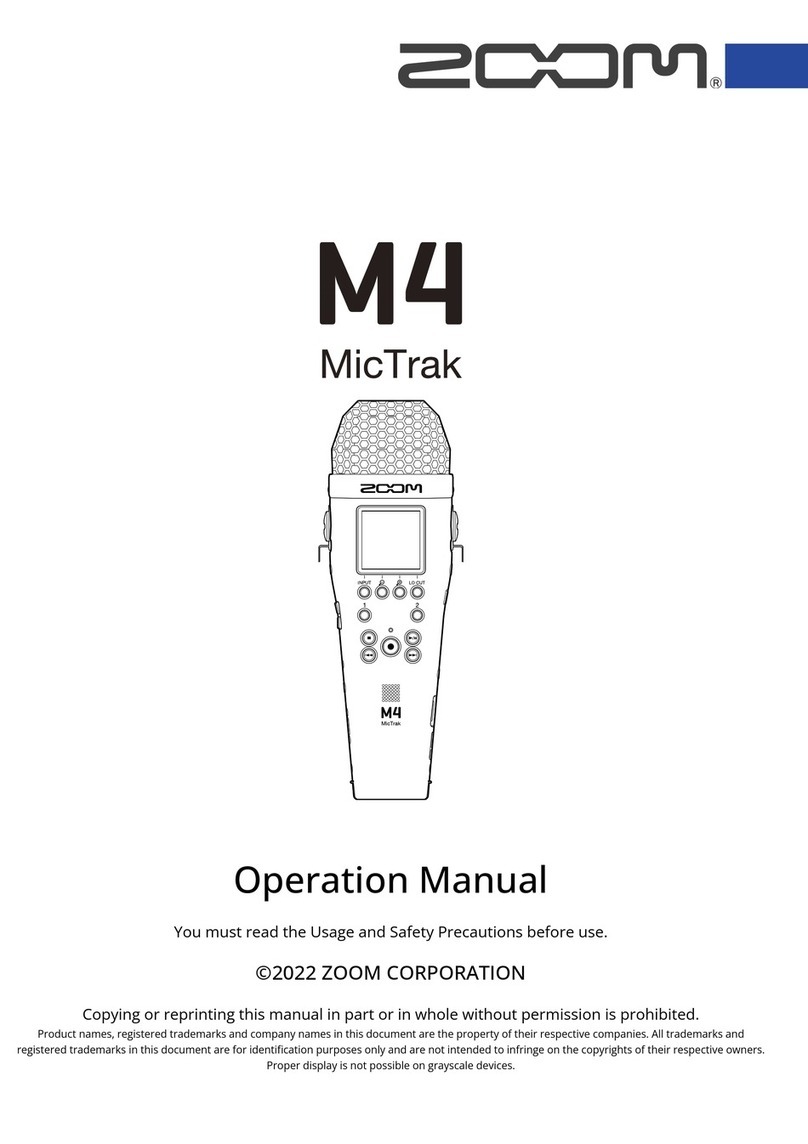Manikin Electronic Schrittmacher User manual

User Manual
OS V1.0d


Preface
Thank you very much for buying the Schrittmacher from Manikin Electronic. The Schrittmacher
extends your music studio by an exceptionally high-performance step sequencer. t allows you intuitive
generation of sequences and grooves. Play with it and discover for yourself the new possibilities of
step sequencing. We hope you will get many ideas for your music by working with your new
sequencer: Enjoy using it.
The Schrittmacher’s development team
Thorsten Feuerherdt : Hardware, housing, design, manual
Markus Horn : Software, design, manual
Mario Schönwälder : Manual, Beta test
Detlef Keller : Beta test
Helga Busch : Translation
Version : 1.0d, July 2008
Our special thanks to
Klaus Schulze, Bas B. Broekhuis, Till Kopper, Thomas Fanger, Andreas Schneider, Pamela und Nele,
Kathja and Niels, … as well as everybody else we may have forgotten to mention here.
Note
Manikin Electronic will not assume any responsibility for errors which may occur in this manual. The
contents of these instructions is subject to change without prior notice. When this manual was created
good care was taken to exclude any mistakes and contradictions. Manikin Electronic will not accept
any guarantees for this manual except those provided by commercial law.
No part of this user manual is allowed to be reproduced without the express written consent of the
manufacturer.
Manikin Electronic, Attilastraße 87k, D-12247 Berlin, Germany
Schrittmacher - Manual
1

Table of contents
Preface..........................................................................................................................1
The Schrittmacher’s development team..................................................................................1
Our special thanks to..............................................................................................................1
Ta le of contents.........................................................................................................2
Operating elements & connections...........................................................................4
Front panel.............................................................................................................................. 4
Back panel..............................................................................................................................5
Introduction..................................................................................................................6
About this manual...................................................................................................................6
Symbols used..................................................................................................................... 6
Marking of parameters........................................................................................................6
General safety notes...............................................................................................................7
Suitable location................................................................................................................. 7
Mains connection................................................................................................................7
Operation............................................................................................................................7
Maintenance....................................................................................................................... 7
Proper use.......................................................................................................................... 7
Setup.............................................................................................................................8
Parts supplied......................................................................................................................... 8
nstallation...............................................................................................................................8
Connections............................................................................................................................ 8
Basic Operation...........................................................................................................9
Power ON...............................................................................................................................9
Power OFF.............................................................................................................................. 9
Playing sequences..................................................................................................................9
nput using the endless dials...................................................................................................9
Working with the Schrittmacher..............................................................................10
Selecting a line......................................................................................................................10
Editing a line.........................................................................................................................10
Editing the step values.....................................................................................................10
Editing the step modes.....................................................................................................10
Editing the line parameters...............................................................................................11
Linking lines.......................................................................................................................... 11
Line Parameters....................................................................................................................13
Type.................................................................................................................................13
Mode................................................................................................................................15
First, Last..........................................................................................................................15
Sync Mode, Sync Base....................................................................................................15
Gate.................................................................................................................................15
Len................................................................................................................................... 15
Midi...................................................................................................................................16
Vel....................................................................................................................................16
Add................................................................................................................................... 16
Schrittmacher - Manual
2

D......................................................................................................................................16
Editing aids........................................................................................................................... 17
Add................................................................................................................................... 17
Rotate...............................................................................................................................17
Setup Menu................................................................................................................18
M D Settings........................................................................................................................ 18
nformation............................................................................................................................ 20
Preset Menu...............................................................................................................21
Load Preset...........................................................................................................................21
Save Preset..........................................................................................................................22
nit Preset..............................................................................................................................23
Dump Preset.........................................................................................................................23
Other Functions.........................................................................................................24
Preload Preset...................................................................................................................... 24
Sync...................................................................................................................................... 24
Loop...................................................................................................................................... 24
Step mode.............................................................................................................................24
Global...................................................................................................................................25
Updating the operating software...........................................................................................26
Annex..........................................................................................................................29
Time and clock table.............................................................................................................29
Technical data.......................................................................................................................30
M D implementation chart....................................................................................................32
Glossary................................................................................................................................33
Schrittmacher - Manual
3

Operating elements & connections
Front panel
1 2 3
4 5
6 7 8 9
10 11
Schrittmacher - Manual
4
1. Display
2. Sequence buttons for selecting the
active sequence range
3. Endless dial with LEDs to edit the 16
steps
4. Cursor buttons
5. Line buttons to select the active line
6. Power button
7. Sync, Loop and Step mode button
8. Global button
9. Enter and Escape
10. Preset and Setup menus
11. Start, Stop and Pause

Back panel
1. Voltage supply socket for the connection of the supplied power supply
2. LCD contrast
3. M D N socket to receive M D data
4. M D OUT socket A to transmit M D data
5. M D OUT socket B to transmit M D data
Schrittmacher - Manual
5
45
3
2
1

ntroduction
Even if you are a professional in using studio equipment and sequencers it will be useful to read this
user manual right through to the end. The Schrittmacher features many new functions never before
implemented in a hardware sequencer.
A out this manual
This manual is intended to make the first steps for using the Schrittmacher easier for you. Moreover it
also provides support and tips to the experienced user for his daily work.
For simplicity’s sake all technical terms in these instructions are identical with the Schrittmacher’s
parameter designations.
Symbols used
To ensure a better overview, this manual uses standardized spelling and symbols which are explained
below. mportant notes are highlighted in bold print.
!Attention – Pay special attention to this note to avoid malfunctions.
iGives some short additional information.
Instructions – Observe these instructions to execute the requested function.
Marking of parameters
All designations of buttons, controllers and parameters of the Schrittmacher in the text are highlighted
in old print.
Example:
Press the Power button.
The value range permitted for parameter setting is highlighted by indicating the maximum and
minimum values in italics separated by three dots. Settings which cannot be represented by a value
range are separated by a comma.
Example:
Midi A01 ... A16, B01 ... B16
Schrittmacher - Manual
6

General safety notes
Please read the safety notes below very carefully. They comprise some basic rules for the use of
electric devices. Please read all the notes before you start using the device.
Suitable location
Only operate the device in closed rooms.
Never operate the device in humid environments such as bathrooms, washing rooms or swimming
pools.
Do not operate the device in extremely dusty or dirty environments.
Ensure unhindered air supply to all sides of the device. Do not place the device in close proximity
of heat sources such as radiators.
Do not expose the device to direct sunlight.
Do not expose the unit to heavy vibration.
Mains connection
Only use the supplied connection cable.
f the supplied mains connector does not fit into your socket you should consult a qualified
electrician.
Disconnect the mains connector from the socket if you do not use the device for a longer period of
time.
Never touch the mains connector with wet hands.
When disconnecting, always pull the connector and never the cable.
Operation
Never place any vessels containing liquids on top of the device.
Ensure that the device cannot move during operation. Use a solid base or a suitable built-in rack
(19‘‘ format).
Ensure that no objects can get inside the device. Should this happen against all odds, switch the
device off and disconnect it from the mains. Then contact a qualified supplier.
Maintenance
Do not open the device. Any repair or maintenance should be done by qualified personnel only.
There are no parts inside the device that could be maintained by the user. You will also lose your
right to claim warranty if you open the device.
Only use a dry, smooth cloth or brush for cleaning the device. Do not use any alcohol, solvents or
similar chemicals. They will damage the surfaces.
Proper use
This device is exclusively intended for creating and processing control signals according to the M D
standard. Any other use is not permitted and will exclude any warranty claims towards Manikin
Electronic.
Schrittmacher - Manual
7

Setup
Parts supplied
Please check when unpacking if all parts are included. Should something be missing contact your
specialist supplier immediately.
The Schrittmacher is supplied with:
Power supply with cable,
this manual.
We recommend to keep the original packaging for further transports.
Installation
Place the Schrittmacher on a clean, even base. nstallation in a solid 19" rack is recommended. The
required space for the height is 132mm which corresponds to 3U. The installation depth is 85mm.
Connections
You need a mains outlet and at least one sound generator with M D interface.
iThe Schrittmacher allows internal generation of transposing and other MI I
control commands. However, the fun factor in using the Schrittmacher for your work
will be increased by at least 10000%, if a master keyboard whose MI I controllers
can be freely assigned is connected to the MI I input.
How to make the necessary connections:
1. Ensure that the Schrittmacher and your M D devices are switched off.
2. Connect the supplied mains cable to the mains connector into a suitable mains outlet.
3. Connect the M D outputs of the Schrittmacher to the M D inputs of the sound generator.
4. Connect the M D input (M D N) of the Schrittmacher to the M D output of a master keyboard
(not required).
5. Switch the Schrittmacher and your M D devices on.
6. Continue with the chapter “Basic Operation“ on the next page.
Schrittmacher - Manual
8

Basic Operation
Power ON
For Power ON press the Power button. After being switched on the Schrittmacher needs a few
seconds to initialize.
Power OFF
To switch the device off press the Power button and keep it pressed until the device is separated from
the mains. The off-delay of approx. 5 seconds is to prevent unintentional switching off. Thus pressing
the Power button briefly will not result in an unintended and possibly embarrassing stop during a live
concert.
Playing sequences
By pressing the Start button the loaded preset is started. All active lines of the 4 sequence ranges will
now create M D events which are sent via the M D outputs.
A running preset can be stopped by pressing the Pause button with the preset not being reset. By
pressing the Start button again playing of the preset will be continued starting from that point where it
was stopped.
Using the Stop button you will stop playing and reset the preset to the initial position.
Input using the endless dials
The endless dials used in the Schrittmacher do not have an end stop position – as opposed to
potentiometers. They also have a pushbutton. Depending on the assigned function, parameters can
be input using the endless dials:
Editing parameters
By turning an endless dial clockwise, the respective value is
incremented. By turning it counter-clockwise the respective value is
decremented.
By pressing the endless dial the mode of a step (play / mute / skip)
can be changed. t depends on the set step mode between which
modes you can change. For more information read the “Step Mode”
section on page 24.
Menu navigation
You can mark a menu item using the endless dial 9. By turning it
clockwise you move the marking downward. By turning it counter-
clockwise you move it upward. Alternatively you can also move the
marking using the cursor buttons ◄▲▼►.
You can select the menu item by pressing the endless dial or the
Enter button. You exit the menu without making any selection by
pressing the Esc button.
iWhen an endless dial can be used for a selection function, the respective LE
lights orange.
Schrittmacher - Manual
9

Working with the Schrittmacher
After Power ON an initialized preset with a note line is loaded. All other lines are OFF. n the display
you see the line that has been selected, the preset name, the play mode, the speed, the values of the
16 steps as well as the line parameters.
Selecting a line
The Schrittmacher has 4 separated sequence ranges between which you can change using the
Sequence buttons. n each range there are 8 lines between which can be changed using the Line
buttons. Once you have selected a line by means of the Sequence and Line buttons you can process
the 16 steps and the line parameters of this line using the endless dials.
The LEDs integrated in the Sequence and Line buttons indicate which line has been selected for
editing. Alternatively there is an indication on the top left which line has been selected: for example,
”S2 | L3“ means that you are editing the third line in the second sequence range.
Editing a line
Using the 16 endless dials allows you to edit the steps of the selected line.
Editing the step values
The value of a step is incremented by turning the endless dial clockwise. This means that the value is
decremented if the endless dial is turned counter-clockwise. To cross very large value ranges some
acceleration has been integrated – i.e. the faster the endless dial is turned, the more values are
skipped.
Editing the step modes
The mode of a step (play, mute/hold, skip) is indicated by a bi-colored LED above the endless dial:
green the step is played
red the step is set to mute or holds the last value
off the step is skipped
Switching from one step mode to another is ensured by pressing the respective endless dial. When
pressing the Step mode button you select changeover between play and mute or play and skip. The
step mode is indicated by the integrated LED:
green changeover between play and mute/hold
off changeover between play and skip
The current step is lit while all other steps are dimmed.
Schrittmacher - Manual
10

Editing the line parameters
To edit the line parameters you have to start by pressing the Enter button. The LEDs of the endless
dials 1 and 9-12 will light in orange. Using the endless dial 1 allows you to set the speed irrespective of
the selected line. The line parameters indicated in the lower third of the display can be edited using the
endless dials 9-12. More line parameters and editing aids (if available) can be displayed by pressing
the cursor buttons ◄ and ►. To exit this mode press the Enter or Esc button.
Linking lines
When you create a note line, all line parameters are initialized with constant values, i.e. all note values
are sent with a constant velocity value Vel on the fixed Midi channel Midi. To ensure that the lines
sound more dynamic the velocity can be controlled by a Vel line, for example. To do so create a Vel
line in the same sequence range as the Note line.
!Only lines in the same sequence range can be linked.
Set all steps and line parameters of the Vel line as requested and return to the Note line. Set the Vel
line you find following the constant value range (0-127) for the Vel line parameters. To do so turn the
endless dial 10 beyond 127. All kinds of links are shown one after the other.
iIn principle it is possible to link one line with several other lines, i.e. a Vel
line can control the velocity of several Note lines.
You can either have an asynchronous (e.g. ”L2“) or a synchronous (e.g. ”L2s“) link of the Vel line to
the Note line.
With an asynchronous link the current step of the Vel line is taken as velocity for the current step of
the Note line. Since the parameters of each line can be set separately very complex sequence
patterns can be created. This allows very lively but in some cases even almost unpredictable
structures to be created. An example:
The Note line plays the first 3 steps (forward and with constant gate). The Vel line plays the first two
steps (forward and with constant gate). The Note line gets the velocity from the Vel line
asynchronously.
123456
C-1 (100) C-2 (50) C-3 (100) C-1 (50) C-2 (100) C-3 (50)
The created sequence of notes is repeated after 6 steps.
Schrittmacher - Manual
11

With a synchronous link the parameters of the Vel line are completely ignored, only the values of the
steps are required. Each step of the Note line is assigned the same step in the Vel line. An example:
The Note line plays the first 3 steps again (forward and with constant gate). The parameters of the Vel
line are of no importance. The Note line gets the velocity from the Vel line synchronously.
1 2 3
C-1 (100) C-2 (50) C-3 (25)
The sequence of notes created is repeated after 3 steps.
io experiment with the various possible links of the Schrittmacher and the
available controlling means of your sound generator. You will come to very
interesting results over and over again.
Schrittmacher - Manual
12

Line Parameters
A substantial characteristic of the Schrittmacher is that each of the 32 lines available can be freely
configured. This allows the Schrittmacher to be adapted to different ways of working and ensures work
in many types of music.
We refer you to the ”Editing the line parameters“ section on page 11 for further details.
Type
The Type line parameter allows you to set the function of a line. A line can generate note events, for
example or vary the velocity of another line or send M D controllers.
!The Type line parameter can only be changed when the preset has been stopped.
You can chose between the following types:
Off
For a better overall view we suggest you switch all lines you do not need to OFF. The steps of an OFF
line cannot be edited.
Note
To be able to control a sound generator you need at least one Note line. The note events of this line
are sent via the M D outputs. Using the steps you enter notes which are to be played. All 128 note
values within the range from C-0 to G-10 which are defined by the M D standard can be set.
iefine several note lines in one sequence range so that you can play polyphonic
note sequences.
Vel
To vary the velocity of a Note line you can define a Vel line. Each step can be set to a value within the
range from 0 up to 127. A velocity of 0 will not generate any note event since it is usually interpreted
by the sound generator as NoteOff.
Gate
The Gate line allows you to vary the time intervals between the steps. The steps can be set within the
range from 1/384 to 16 1/1 notes. For the table listing the values to be set we refer you to page 29.
Len
You can control the length of a note in a Note line by the Len line. The steps can be set within the
range from 1/384 to 16 1/1 notes. For the table listing the values to be set we refer you to page 29.
Schrittmacher - Manual
13

Midi
You can play a note sequence alternately with different sounds by controlling the M D channel of a
Note line with a Midi line. This way some kind of wave sequencing can be implemented. Using the
steps of the Midi line you indicate the M D channels (and thus the sounds) on which is to be played.
Settings from A01 to B16 are possible with the letter indicating the M D output and the number the
M D channel. The M D channel of a Ctrl line can also be controlled by a Midi line.
Add
Using the Add line more offsets can be added to the values of the Note, Vel and Ctrl lines. This way a
Note line can be transposed. By using an Add line the Vel and Ctrl lines can be additionally varied.
Ctrl
Besides the Note line, the Ctrl line is the only line which can output M D events on the M D outputs.
Using the Ctrl line you can control the controllers and parameters of the sound generator. Using the
steps you can set values in the rang from 0 to 127. We suggest you refer to the manual of your sound
generator to see which parameters you can control by which controllers. Using the ID line parameter
you can set the controller you want to use.
!If you use a trl line in conjunction with a Note line, make sure that the same
MI I channel is set in both lines.
Mode
The play mode of another line can be controlled by a Mode line. This way you can change the mode
of another line while playing, e.g. from “forward” to “random”.
Depending on the Type line parameter you have access to other line parameters such as play
direction, M D channel, etc.
Type Line Parameters
Off
Note Mode First Last Sync
Mode
Sync
Base Gate Len Midi Vel Add
Vel Mode First Last Sync
Mode
Sync
Base Gate Add
Gate Mode First Last Sync
Mode
Sync
Base
Len Mode First Last Sync
Mode
Sync
Base Gate
Midi Mode First Last Sync
Mode
Sync
Base Gate
Add Mode First Last Sync
Mode
Sync
Base Gate
Ctrl Mode First Last Sync
Mode
Sync
Base Gate D Midi Add
Mode Mode First Last Sync
Mode
Sync
Base Gate
Mode
Schrittmacher - Manual
14

Using the Mode line parameter you set the play mode of a line. The following modes are possible:
-> Forward
<- Backward
<-> Ping pong; the first and last steps are played once
<=> Forward / backward; the first and last steps are played twice
? Random
The Mode line parameter can be linked with and controlled by a Mode line.
First, Last
First indicates the step of a line with which it starts. Last indicates the step with which the line ends.
Set one value each from 1 to 16 for either line parameter to define these steps. f one of the steps is
skipped, the line is automatically started or ended with the next step. Only those steps are played that
are between First and Last.
As an alternative, you can also define First and Last with the loop function. For more information
about the loop function we refer you to the “Loop” section on page 24.
Sync Mode, Sync ase
With Sync Mode you can set automatic or manual synchronization of the line (by pressing the Sync
button). Synchronization follows the time set in the Sync Base line parameter. For the table indicating
the values to be set we refer you to page 29. For further information about synchronization we refer
you to the “Sync” section on page 24.
Gate
The time interval between to consecutive steps is defined by the Gate line parameter. The interval can
be set within the range from 1/384 to 16 1/1 notes. For the table indicating the values to be set we
refer you to page 29.
The Gate line parameter can be linked with and controlled by a Gate line.
Len
The Len line parameter can only be found for Note lines. Len determines the length of the notes
played and can be set within the range from 1/384 to 16 1/1 notes. For the table indicating the values
to be set we refer you to page 29.
iSetting Len is limited by the Gate line parameter, i.e. a note is only held until
a new note is struck.
The Len line parameter can be linked with and controlled by a Len line, Key or Ctrl1-8.
Schrittmacher - Manual
15

The Gate and Len line parameters influence the note output as follows: Gate sets the interval
between two note-on events; Len defines the interval between a note-on and the respective note-off
event.
Figure 1 – Effect of Gate and Len on the note output
Midi
The Midi line parameter defines the M D output and the M D channel for a Note or Ctrl line. You can
set values from A01 to B16 with the letter indicating the M D output and the number the M D channel.
The Midi line parameter can be linked with and controlled by a Midi line.
Vel
The velocity of a Note line can be set by the Vel line parameter within the range from
0 to 127. At a velocity of 0 no note event is generated because it is usually interpreted by sound
generators as note off.
The Vel line parameter can be linked with and controlled by a Vel line, Key or Ctrl1-8.
Add
Using Add an additional offset is added to the steps of the Note, Ctrl and Vel lines. Note lines can be
transposed and Ctrl and Vel lines can be varied in their course. Add can only be linked with an Add
line or a controller. A constant value cannot be set. To do so use the Add editing aid described on
page 17.
The Add line parameter can be linked with and controlled by an Add line, Key or Ctrl1-8.
ID
The ID line parameters can only be found with Ctrl lines. Using ID you can select the controller to be
sent. The following settings are possible:
Pitch the Ctrl line sends pitch bend events
Ch.Aft. the Ctrl line sends channel aftertouch events
0 ... 120 the Ctrl line sends control changes with the set controller D
The ID line parameter cannot be linked with and controlled by any other lines.
!If you edit the ID line parameter while playing the preset, it is possible that
some settings of the connected sound generator are changed unintentionally.
Therefore always edit ID in the stopped state.
Schrittmacher - Manual
16

Editing aids
Following the line parameters there are the editing aids which are intended to simplify step processing.
Here again inputs are made using the endless dials whose respective LEDs are lit in orange.
Add
Using Add you can increment or decrement all step values of a line at the same time. This means that
you can transpose a Note line very quickly, for example, without having to set each step individually.
This function is also very useful if you play a single drum sound with a Note line. Using Add drum
maps can be searched very conveniently.
Rotate
Using Rotate you shift all steps of a line to any position to the left or right. Since the step modes (play,
mute/hold, skip) are not shifted, this function is also useful for live operation. And again: Try it out.
Each experiment will reap a reward!
Schrittmacher - Manual
17

Setup Menu
f the Schrittmacher is in the stop or pause mode, you get into the setup menu by pressing the Setup
button. Mark the requested menu item by means of the cursor buttons ▲ and ▼ or the endless dial 9.
By pressing the Enter button or the endless dial 9 you select the marked menu item. You exit the
menu without making any selection by pressing the Esc button.
The setup menu provides the following menu items:
MIDI Settings
The M D setup allows setting of some global settings referring to all 4 sequences of a preset. Here
basic settings are made such as the M D receive channel or the type of clock source.
MIDI 1 ... 16
M D indicates the M D channel via which the sequences can be changed (e.g. transposed) using the
master keyboard. There is no reaction to notes and controller events of the other channels. So
remember to set the M D output of your keyboard to this channel.
iThe Schrittmacher is not transparent for incoming MI I events, i.e. all MI I data
received on MI I IN will be filtered, except Timing lock, Start, Stop and ontinue!
ID 0 ... 126
ID is the device number and serves to differentiate several Schrittmacher in one M D setup. Should
you use several Schrittmacher, set a different ID for each device. f only one Schrittmacher is used,
the basic setting (0) does not need to be changed.
.
Schrittmacher - Manual
18
Table of contents
